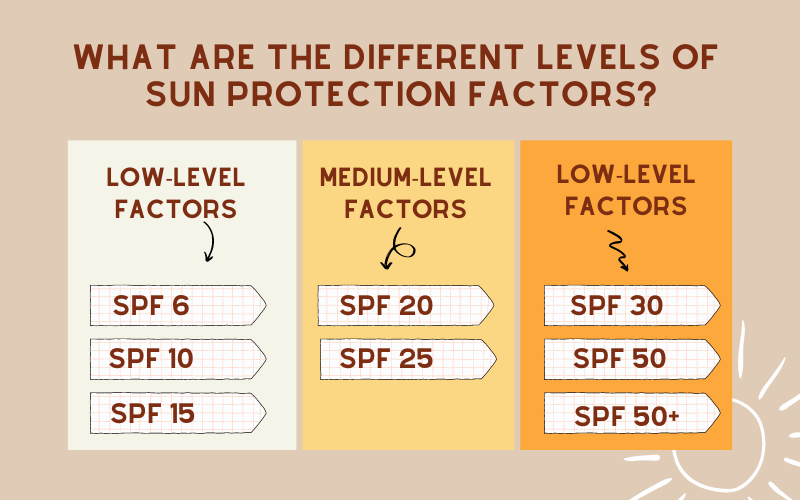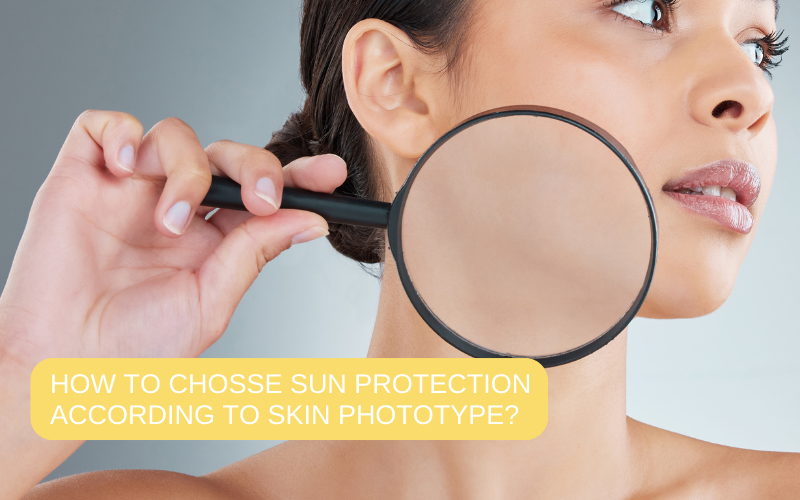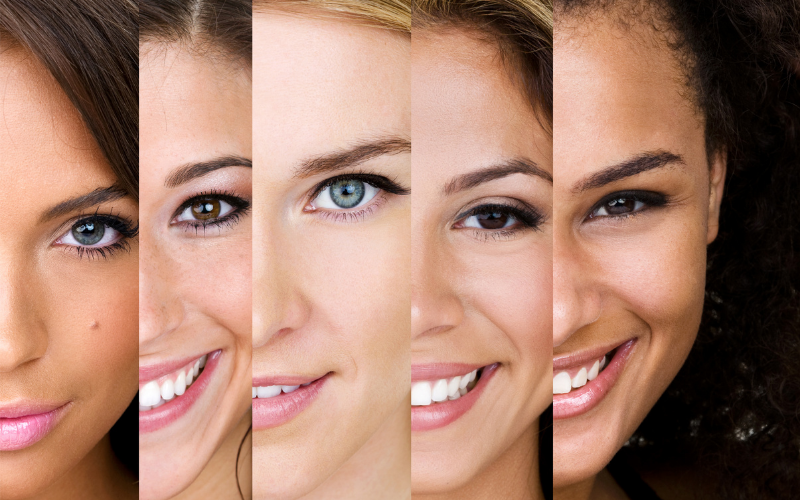What is Skin Phototype and SPF?
Skin phototype is related to skin color and intensity of skin tone. Sun Protection Factor (SPF) measures the level of protection provided by a sunscreen (lotion, cream, stick, etc) against solar radiation.
What is Skin Phototype?
First described by Dr. Thomas Fitzpatrick in 1975, skin phototypes were developed based on an individual’s skin color and their tendency to burn or tan when exposed to sunlight. Represented on the Fitzpatrick’s scale, skin phototype classifies different skin types into six groups: 1 being the lightest and 6 being the darkest.
The Fitzpatrick phototype classification scale was later modified to include two additional criteria:
- hair color (blond, red, brown, etc)
- eye color (blue, green, brown).
What is SPF?
SPF, or Sun Protection Factor, refers to the level of protection offered by a sunscreen acting as a filter against UV light, especially UVB rays which are responsible for sunburn. This measurement assesses the effectiveness of sun protection against sunburn and premature skin aging. The higher the SPF, the more effective the protection.
The European Commission defined the labeling rule for sunscreens in its recommendation of September 22, 2006. It specifies the correspondence between sun protection factors and actual protection levels.

What are the different levels of sun protection factors?
Low-level factors
SPF 6, 10 and 15 offer 50% protection against UV radiation. They are not recommended for prolonged direct exposure to sunlight as their protection is low and causes redness and sunburn.
Medium-level factors
SPF 20 and 25 offer 70% protection against UV radiation. They are suitable for occasional exposure to sunlight, providing medium protection that should be adjusted according to the phototype.
High-level factors
SPF 30, 50 and 50+ offer high (30 and 50) to very high (50+) protection against UV radiation. They are perfectly suited to people whose skin is very sensitive to sunlight. The effectiveness time of high SPF products is relatively longer than low SPF sunscreens.

How to choose sun protection according to skin phototype?
It is strongly recommended to determine skin type before choosing sun protection as it will vary according to skin tone. People with fair skin should choose a sunscreen with an SPF of at least 30, while those with darker skin can opt for a sunscreen lotion with an average SPF of 20 or 25.
How are different skin phototypes categorized?
- Phototype I: Very fair skin, with or without freckles, blond or red hair, blue eyes, very easily sunburned.
- Phototype II: Fair skin, blond hair, green eyes, some redness after sun exposure.
- Phototype III: Tans but not permanently, brown hair, brown or green eyes, little or no redness after sun exposure.
- Phototype IV: Tans permanently, dark or black hair, dark eyes, small red spots after sun exposure.
- Phototype V: Very dark skin, black hair; dark eyes, little red spots after sun exposure.
- Phototype VI: Very dark skin, black hair, dark eyes, hardly any or no red spots after sun exposure.
WATCH THE VIDEO – What sunscreen for my skin?
To conclude, it is important to understand the different nuances of skin to choose the appropriate level of sun protection according to one’s phototype.
ALPOL Cosmetique, a bespoke cosmetic manufacturer based in France, analyzes SPF in more detail in its article “Sun protection: how to protect your skin from the sun?“.
As an expert in the development of sun protection products, the French cosmetics manufacturer contributed to the reflection on the need for sun protection for the face in their article: “Face sunscreen: why do we need daily facial SPF?”
ALPOL Cosmetique is the partner of beauty brands looking to develop or enrich their range of sun care products. The French bespoke cosmetics manufacturer offers a wide range of formulas that have been previously tested in the laboratory.
ALPOL Cosmetique’s dedicated teams accompany you in your product development project. Contact them here.





